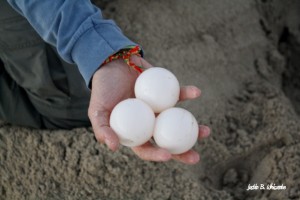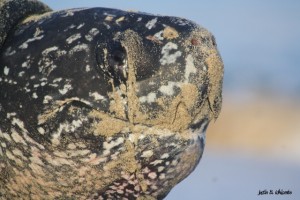
- Roadside Hazard Tree Analysis
- Forest Legacy Assessment of Need for the Virgin Islands
- Antiguan Forest Canopy Tour, Annual Tree Safety Inspection
- Forest Resource Assessment for the USVI and Puerto Rico
- Population Assessment of the Endangered St. Croix Ground Lizard
- Rapid Vegetation Assessment and Coastal Landscaping Plan for The Palms at Pelican Cove
- Recreational Use Assessment for the East End Marine Park
- Sea Turtle Monitoring at Sandy Point National Wildlife Refuge
Sea Turtle Monitoring at Sandy Point National Wildlife Refuge
![]()
Geographic Consulting was contracted in 2011 by US Fish and Wildlife Service to run the sea turtle monitoring project at the Sandy Point National Wildlife Refuge, St. Croix, US Virgin Islands. This long term project began in 1982 and has continued since then without interruption. The primary focus of the monitoring program has been the federally endangered Leatherback Sea Turtle (Dermochelys coriacea), although other turtle species are monitored and tagged in some years. The leatherback is the largest of all living turtles and the 4th largest living reptile (learn more). Over the years, saturation tagging (with every effort made to tag every nesting sea turtle) has provided accurate population estimates, identified long-term population trends, and produced detailed assessments of adult morphology, remigration intervals, fecundity, and nesting activities.
In addition to monitoring trends in leatherback nesting at Sandy Point, sea turtle nests that are laid in areas where they are unlikely to survive, due to erosion or drowning, are relocated to safer places on the refuge beach. In the first three years that Geographic Consulting ran the project, over 12,000 hatchlings have been given a chance to mature into adults instead of being killed in their nests, thanks to our relocation program.

Liz Zimmer, Geographic Consulting’s Field Director for the 2013 Leatherback nesting season as Sandy Point National Wildlfe Refuge
Geographic Consulting has also periodically conducted monitoring on Green and Hawksbill turtles at Sandy Point. In 2011, we established that nest predation rates for these smaller turtles were far higher than originally suspected and the main culprit was the introduced mongoose (Herpestes javanicus). Jennifer Valiulis and her team of wildlife biologists at Geographic Consulting collaborated with the Sandy Point Wildlife Refuge staff and biologists with USDA – Wildlife Services to come up with a plan to control mongoose in high density nesting areas. As a result, predation was reduced significantly.
For additional details on this years leatherback sea turtle monitoring team, please see our staff page. For updates of preliminary findings and notes from the field, follow our blog or see updates on Facebook






Comments
Born in St. Croix and have never seen turtles nesting. Can you email me info of turtle nesting watch on the Islands? That will be so amazing. Thanks!
Hello, We only run the scientific research and monitoring. The turtle watches are done separately by US Fish and Wildlife. I believe they are booked for the rest of the year, but it is possible to make a reservation to see hatchlings emerge. They can be reached at this website http://www.fws.gov/caribbean/Refuges/Sandypoint/default.htm or Michael Evans, Refuge Manager Sandy Point National Wildlife Refuge 3013 Estate Golden Rock, Suite 137 Christiansted, St. Croix USVI 00820-4355 Phone: 340.773.4554, Fax: 340.713.8971
Comments, Questions? Contact Us.